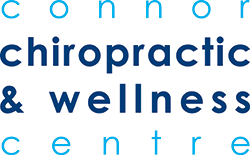Pain or stiffness in your neck or back?
The neck and mid-back are particularly prone to becoming sore and stiff. We see patients experiencing mid-back and neck pain every single day in our practice. A large majority of these patients present in a similar fashion with pain at the end range of motion and decreased total range of motion. This can be in either their thoracic spine (mid-back) or their cervical spine (neck). Once we have performed a thorough history and physical exam, we can rule out any significant tissue injury in the majority of these patients.
Symptoms that we see in the clinic with this sort of complaint include:
- Pain between the shoulder blades, at the base of the skull, and down into the shoulders.
- Range of motion can be limited where the patient has trouble extending all the way back or turning their neck from side to side.
This is a great example of a case where Chiropractic Care can help decrease the symptoms and increase the range of motion. But an important question we often get is: Why did this happen?
The why is always a difficult question to answer because everyone’s day-to-day activities and biomechanics are so individualized. That being said, we do see some general commonalities between many of our patients with mid-back and neck pain.
Some common things we notice include:
- Spends a significant amount of time each day at their desk
- Does not take time to move throughout the day
- Low step count daily
- Tends to do only one type of exercise (or no exercise)
- High stress job
Based on clinical experience and our history of helping patients get out of pain, we have a list of basic recommendations. These are quick changes you can make in your day-to-day life that may be protective against pain, decreased range of motion and stiffness. Although they may not completely eliminate your symptoms, they are a great starting place for most patients.
Recommendations for improving these symptoms:
- Try standing periodically throughout the day, or change or sitting position. Sitting isn’t inherently bad, but staying in a static position all day can decrease the range of motion you use in a joint and allow them to stiffen up while you work.
- Move often during the day: This can be as simple as doing a neck stretch while typing an email or a few arm swings between meetings.
- Increase your step count: Most patients have little control over how long they sit at work, but that can be combated during the rest of the day. Increasing your step count each day can help decrease stiffness and increase blood flow to the muscles. Simple shifts, like parking further away from the door at the store or taking an extra set of stairs is key.
- Vary your exercise: We are huge fans of finding an exercise type you enjoy and sticking with it. That being said, doing the same thing over and over only takes you through a very specific range of motion. For example, if you like running, try adding in another form of exercise that doesn’t involve the same motion. This could be swimming, cycling, yoga, 10-minute stretches, tennis etc. By challenging your body through different motions, you increase how often you use your joints’ full range of motion.
- Breath: Again, we have many patients with high-stress jobs or lives, and many of those factors aren’t easily changed! Taking 1 minute a few times a day to close your eyes, focus on breathing through your nose and clear your mind can help start the process of decreasing your overall stress levels.
Wondering how you can increase your movement and incorporate it into your daily life?
Here are a few of our top exercise suggestions:
*Note that these exercises are simply examples of what we prescribe to patients. Each patient requires an individualized exam to determine their condition and if exercises are indicated.


